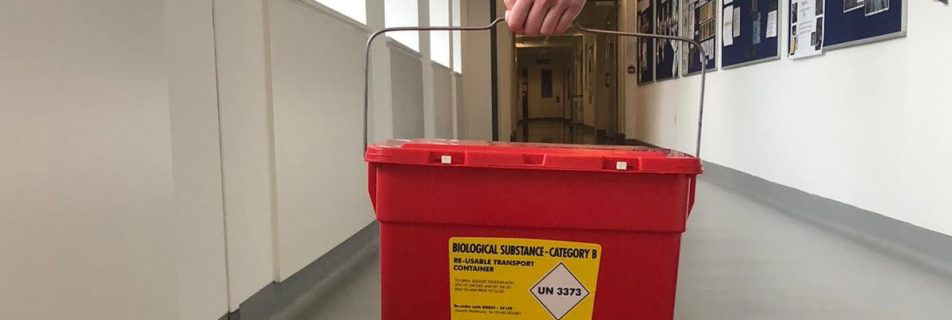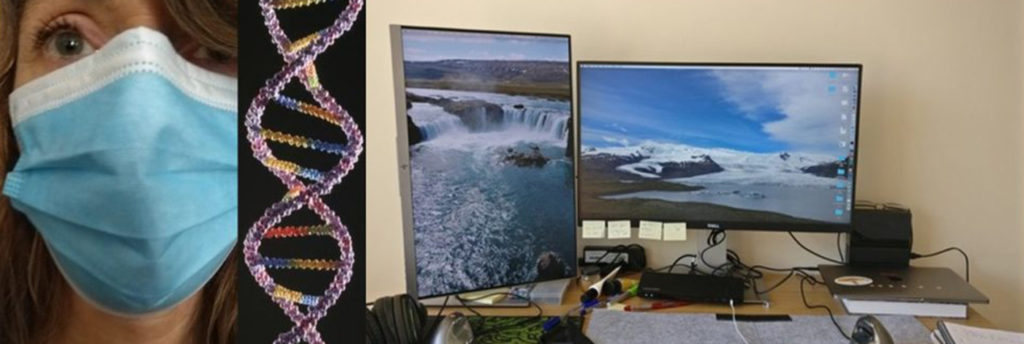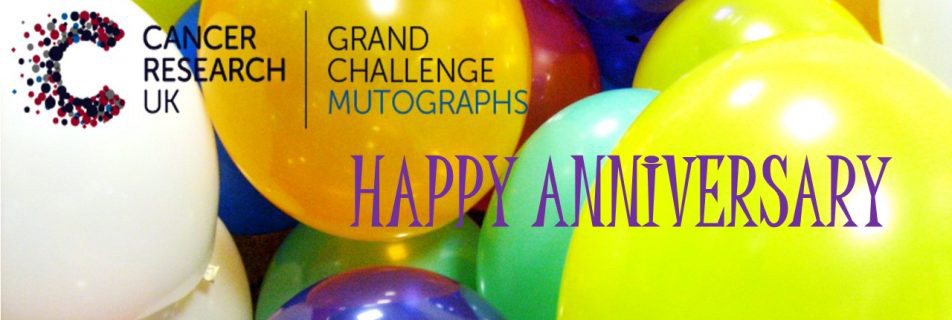2021: A Mutographs Story
Saamin Cheema joined the Mutographs project in January 2021 as a Data Scientist. Here, she reflects on the year she has spent as part of the Mutographs team.
When I first started working with the Mutographs team in January 2021, I had recently completed my Bachelor’s degree in Biochemistry from UCL and was excited about this incredibly exciting and meaningful opportunity. It was the culmination of a journey that started with my A-level project (EPQ) in cancer genetics up to my final year dissertation in bioinformatics.
I work with the analysis team at the Wellcome Sanger Institute to analyse cancer genomes of patients from across the world. Our aim is to discover patterns of mutations (called ‘mutational signatures’) that could be linked to a particular lifestyle or environmental factor involved in cancer development. Prior to starting my role, I was aware of the high-impact nature of the work the Mutographs team is conducting; however, I didn’t realise its sheer scale with thousands of whole genome samples being analysed, nor the depth and breadth of international collaboration involved.
Working through the pandemic
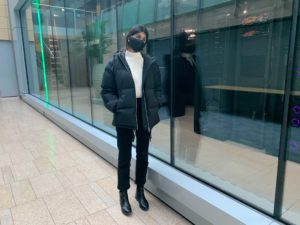
Saamin at the data centre at the Wellcome Genome Campus. Image: Chloe Pacyna
Despite the pandemic and remote working, the Mutographs team have continued their efforts and made significant progress over the past year. Over 3000 samples have now been sequenced and analysed since the Mutographs project started in 2017; we have managed to analyse over 1000 in the past year alone.
With the completion of the Oesophageal Squamous Cell Carcinoma (OSCC) study, the Mutographs team has powered on and is now working on another cancer type, kidney cancer. We have finished collecting the samples and generating the data for the kidney study, and are now at the stage of analysing the mutational signatures with the information gathered on lifestyles and environment.
It has been exciting to analyse this very large dataset of nearly 1000 whole kidney cancer genomes. The team are seeing some promising results with the discovery of new mutational signatures, and we hope to share these findings soon. We have observed that some signatures are enriched in countries with high kidney cancer incidence when compared to countries with low incidence. The team is currently investigating whether this difference can be linked to lifestyle or environmental factors, which could be contributing to the risk of developing kidney cancer.
Returning to the campus
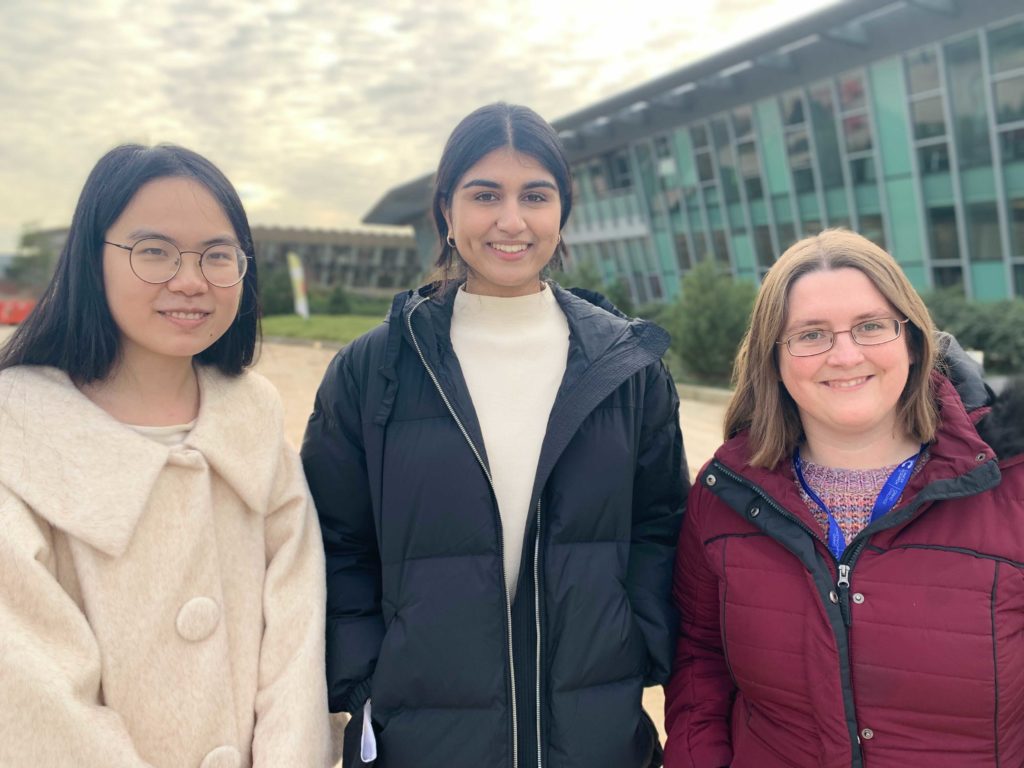
Saamin (centre) with her Mutographs colleagues Yichen (left) and Sarah (right) at the Wellcome Genome Campus. Image: Chloe Pacyna
From summer 2021, the Wellcome Sanger Institute where some of the Mutographs team are based, progressively opened its doors with more staff returning to site. I also excitedly moved to Cambridge from my home in the North West of England, and was eager to work with my colleagues in person. After remote working for 8 months, I really appreciated working on site at the beautiful Campus, and benefiting from being part of the scientific community.
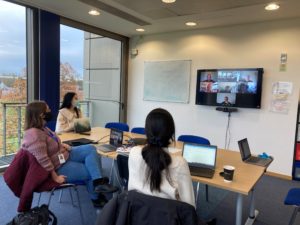
A hybrid meeting for the Mutographs team. Image: Laura Humphreys
Most of the Mutographs team here at Sanger settled into a hybrid work pattern with a mixture of working on site and from home. To assist this new normal of working, Sanger meeting rooms are equipped with technology to allow staff on site to take Zoom meetings together with those working from home. There are also precautions in place to ensure safety for everyone on Campus, including wearing masks and regular PCR testing. This is very much in line with my experience of this research institute which takes its duty of care towards its employees seriously while also ensuring the science can continue.
However, in the last month of 2021, Sanger made the responsible decision to once again advise staff to work mostly from home due to to the rapid spread of the Omicron coronavirus variant in the UK. Fortunately, the Mutographs team has successfully worked from home since March 2020, so we are easily able to continue analysis of data off-site. I am looking forward to when we can return to the vibrant Campus once it is safe again.
Mutographs at the Science Museum
I was really pleased to learn that Mutographs is featured in an exhibition on cancer research, which opened in autumn 2021 in Manchester’s Science and Industry Museum, and will be moving to London’s Science Museum in spring 2022. The exhibition is called Cancer Revolution: Science, Innovation and Hope, and is organised by the Science Museum in partnership with Cancer Research UK.
It takes an honest, uncompromising look at cancer and shares the hopeful side of cancer research. I visited the exhibition in November 2021, and enjoyed seeing how our work in Mutographs fits into the broader world of cancer research. From the impact cancer has on patients and their families to modern day therapies, the exhibition provides an extensive overview of the disease in a new and engaging way. It was interesting to learn about: the importance of studying animal genetics, for example the genes responsible for antler growth in deer are genes related to human cancer; smart and robotic devices developed to increase efficacy of tumour removal surgeries; and new targets for treatments, such as developing drugs to target not only cancer cells directly but the surrounding healthy cells in a tumour which support cancer growth.
The Mutographs project features as a short video in the ‘Seeing and Studying Cancer’ section of the exhibition. Mutographs team members in Cambridge, Lyon and San Diego worked together with the Science Museum to prepare a video sharing our work and aims. It was challenging to film with varying Covid restrictions in place across the different countries, but the teams worked together to create a unified final result.
The Mutographs film as presented at the Cancer Revolution: Science, Innovation and Hope exhibition. The film was produced by the Science Museum and members of the Mutographs team.
Cancer Research UK predict that 1 in 2 people will develop cancer in their lifetime, so there is a necessity for ground breaking research like the Mutographs project. The video shares the project’s ambition to uncover underlying causes of cancer, and generates optimism that this can lead to prevention measures for this disease.
An inspirational year
I have had an inspirational year with Mutographs, settling into a good working rhythm with the team, and cementing my passion for science. I have learnt so much and feel proud to be a part of the project. It is a nurturing environment, and with the team’s guidance and encouragement I have developed my skills and taken on greater responsibilities. Heading into 2022, I look forward to contributing more to the project as we enter the next stages of the kidney study, and begin analysis on more cancer types, starting with head and neck cancers.
The header image is of the entrance to the Science and Industry Museum in Manchester, taken in November 2021. Image credit: Saamin Cheema.

